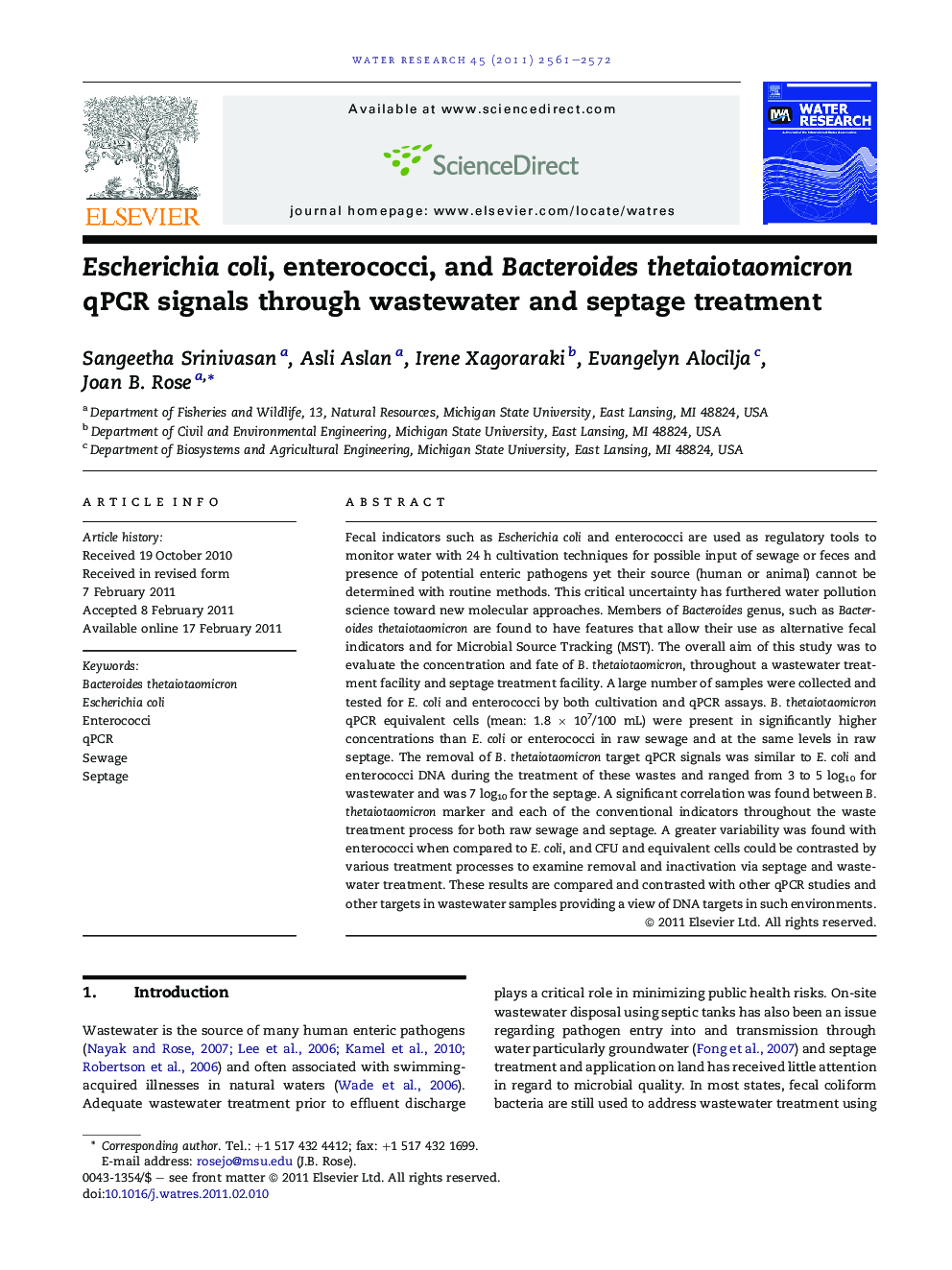| کد مقاله | کد نشریه | سال انتشار | مقاله انگلیسی | نسخه تمام متن |
|---|---|---|---|---|
| 4483580 | 1316892 | 2011 | 12 صفحه PDF | دانلود رایگان |

Fecal indicators such as Escherichia coli and enterococci are used as regulatory tools to monitor water with 24 h cultivation techniques for possible input of sewage or feces and presence of potential enteric pathogens yet their source (human or animal) cannot be determined with routine methods. This critical uncertainty has furthered water pollution science toward new molecular approaches. Members of Bacteroides genus, such as Bacteroides thetaiotaomicron are found to have features that allow their use as alternative fecal indicators and for Microbial Source Tracking (MST). The overall aim of this study was to evaluate the concentration and fate of B. thetaiotaomicron, throughout a wastewater treatment facility and septage treatment facility. A large number of samples were collected and tested for E. coli and enterococci by both cultivation and qPCR assays. B. thetaiotaomicron qPCR equivalent cells (mean: 1.8 × 107/100 mL) were present in significantly higher concentrations than E. coli or enterococci in raw sewage and at the same levels in raw septage. The removal of B. thetaiotaomicron target qPCR signals was similar to E. coli and enterococci DNA during the treatment of these wastes and ranged from 3 to 5 log10 for wastewater and was 7 log10 for the septage. A significant correlation was found between B. thetaiotaomicron marker and each of the conventional indicators throughout the waste treatment process for both raw sewage and septage. A greater variability was found with enterococci when compared to E. coli, and CFU and equivalent cells could be contrasted by various treatment processes to examine removal and inactivation via septage and wastewater treatment. These results are compared and contrasted with other qPCR studies and other targets in wastewater samples providing a view of DNA targets in such environments.
► Automated DNA extraction can be effectively used for water and wastewater samples.
► B. thetaiotaomicron, human marker present in same levels as conventional indicators in fecal sources.
► Significant correlation between MST marker and indicators in waste treatment processes.
► Significant difference between CFU and qPCR cell equivalents after chlorination.
Journal: Water Research - Volume 45, Issue 8, April 2011, Pages 2561–2572